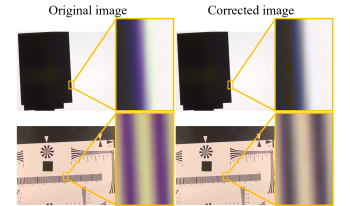
Evaluating spatial frequency response (SFR) in natural scenes is crucial for understanding camera system performance and its implications for image quality in various applications, including machine learning and automated recognition. Natural Scene derived Spatial Frequency Response (NS-SFR) represented a significant advancement by allowing for direct assessment of camera performance without the need for charts, which have been traditionally limited. However, the existing NS-SFR methods still face limitations related to restricted angular coverage and susceptibility to noise, undermining measurement accuracy. In this paper, we propose a novel methodology that can enhance the NS-SFR by employing an adaptive oversampling rate (OSR) and phase shift (PS) to broaden angular coverage and by applying a newly developed adaptive window technique that effectively reduces the impact of noise, leading to more reliable results. Furthermore, by simulation and comparison with theoretical modulation transfer function (MTF) values, as well as in natural scenes, the proposed method demonstrated that our approach successfully addresses the challenges of the existing methods, offering a more accurate representation of camera performance in natural scenes.

In digital cameras, the wavelength dependency of images captured through lenses and filters affects the spatial resolution characteristics of the images, which adversely impacts image quality. Previously, lens design and image processing techniques have been considered to address the aforementioned problem. Although aberrations could be improved, it was difficult to completely analyze the wavelength dependency of resolution characteristics. This study aims to reduce the wavelength dependency of the spatial resolution of digital cameras. Edge-based modulation transfer function (MTF) measurements using a 2D spectroradiometer were used to obtain wavelength-specific MTFs and quantitively reveal the wavelength dependency of the spatial resolution characteristics. Moreover, we experimentally confirmed that adjusting the MTFs of the CIEXYZ images obtained by combining spectral images to be closer reduces the difference in spatial resolution among color images while minimizing the color change before and after the adjustment.